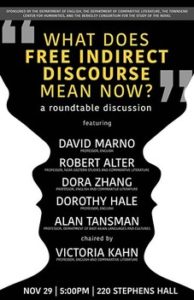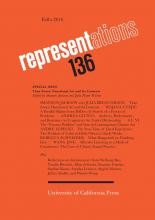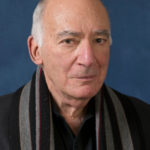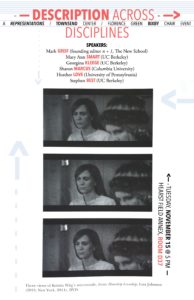by Bojana Cvejić

The essay begins:
This text is written with a double mission. By observing choreographic and dramaturgical ideas and methods in the performances of the Croatian collective BADco, I want to revive the importance of poetics in light of the predominance of practice in today’s discourse on art. BADco is a performance collective based in Zagreb (founded in 2000), and its artistic core comprises three dancer-choreographers, two dramaturges, and a philosopher: Ivana Ivković, Ana Kreitmeyer, Tomislav Medak, Goran Sergej Pristaš, Nikolina Pristaš, and Zrinka Užbinec. As the dramaturge Goran Sergej Pristaš has argued, today we are witness to a transformation of artistic work into praxis, whereby artistic labor is extended, atomized, and dispersed in a variety of activities in which the artist manifests his/her will. These purportedly free, yet commodified activities are often presented under the paradigm of art as research and education: as lectures, workshops, encounters, methodological exchanges, residencies, and so on. These occur in a familiar rhythm of fragmentation that subsumes life under work, that is, within the all-encompassing term artistic praxis. In such a regime of production little time is left for the artist actually to engage with his/her art, Pristaš concludes. In his brief statement “Praise of Laziness” (1993), the Croatian conceptualist Mladen Stilinović suggests that to engage in art making the artist must endorse (and perfect) laziness, in an emphatic annihilation of capitalist production and the institutional market. Laziness emerges as a poetics for Stilinović (and for Kazimir Malevich and Marcel Duchamp, both of whom he draws upon), or as a condition for poetics, understood as an engagement with the principles of production (poiesis).
According to Aristotle, poiesis is one of the three categories of human activity. It is poietikai technai that designates the art of making, forming, and composing, or production, in contrast to, on the one hand, praktikai technai, which refers to activity without an end or product, carried out for effect in public, hence, a performing art or an instantiation of the political life of citizens. On the other hand, poetics is also distinguished from teoretikai technai, which signifies investigation, or theory as opposed to practice. However, this distinction can barely hold any longer, as the term “practice” has broadened to such an extent that it incorporates both poetics and theory. Moreover, the discourse on artistic practice has cannibalized poetics, emptying it of thought concerning what the product of artistic activity is, what it means, and how its principles might become instruments for looking past art into society.
In order to explain what this double (artistic and political) articulation of poetics entails, as well as to situate the geocultural context in which BADco’s work arises, I will briefly introduce a book I co-edited with Goran Sergej Pristaš entitled Parallel Slalom: A Lexicon of Non-Aligned Poetics. The volume features essays on notions of poetics devised by Yugoslav artists and cultural workers—ideas and working principles that exceed the autonomy of art by also pointing to the political unconscious of a society (that of the former Yugoslavia, now under EU capitalist democracy, and then under socialism). One example would be Stilinović’s “laziness,” mentioned earlier; others would include the concept of “delay,” or the misrecognition, from the viewpoint of the Western-centered conception of modernity, of art in Eastern Europe or the concept of “radical amateurism,” which describes the artistic practice of taking the stance of the amateur who dares to ask disturbing, nonprofessional questions.
Two attributes characterize this kind of thought: parallelism and nonalignment. The latter refers to the nonaligned movement of states that were not formally aligned with either of the two major power blocs during the Cold War. Nonalignment suggests that neither the discourses of art in the grip of the Soviet socialist regime nor the postcolonialism of the West and its academic variants can adequately account for experimental performance practices in former Yugoslavia. While much of the experimentation was probed in writing—forming, since the year 2000, a regional (post-Yugoslav) platform of performing arts magazines such as Maska, Frakcija, and TkH/Walking Theory—the artists’ pages that were supposed to present performance artists from the Yugoslav context remained “empty.” Due to a lack of infrastructure for producing performances, artists and theorists were more often able to “rehearse thought” than to maintain a performance praxis, a fact evidenced in the export of Eastern European theorists and dramaturges into the Western context. Additionally, the spirit of collectivity and self-organization in life and artistic production within the independent scenes of Ljubljana, Zagreb, Belgrade, and Skopje, made the identification of experimental practice difficult or irrelevant. In the Yugoslav cultural legacy authorship isn’t branded as personal cultic expression or assigned clearly to one discipline, medium, or genre. BADco’s practice as a self-organized collective, a “nameless association of authors” (the acronym “BAD” in BADco stands for “bezimeno autorsko društvo” in Croatian) entails the rotation of responsible roles for each single work according to the varying wishes and concerns of the participating artists, roles that then transform in the course of the working process, rather than following established competencies of the individuals involved.
Now, returning to parallelism, calling poetics as a kind of thought a “parallel slalom” is to use the metaphor of a sloping ride, indeed, of a downhill ski race, which underlines the swift parallel connections between artists’ conceptual imagination and their critical insights into history and its political unconscious. The registers of poetics, politics, and philosophy here run parallel and sometimes get short-circuited among the notions of this lexicon. Parallelism also implies a kind of thought that arises from within, or close to, artistic practice in its productive rather than interpretive aspect. While today most art schools in Europe foster a procedural knowledge of art making, the poetical concepts in parallel slalom emphasize learning how to look through and from art rather than how to create it. Perhaps thinking of the political usefulness of art as a set of critical tools is a reflex from previous socialist times. Parallelism also accounts for the aesthetic similarity between Eastern and Western European performance practices, which has contributed to the perception of the Eastern as a déjà vu, as old-fashioned in the Western gaze, causing some misunderstanding and disenchantment in the West in the 1990s. Boris Groys has explained that the misrecognition of Eastern “non-art” by critics in the West, who failed to recognize it as art, reveals the difference in the use of art, not in aesthetic categories of form and style.
This difference in the aesthetic function of art is what we are going to observe in BADco’s choreographic poetics. Continue reading …
This text explores choreographic and dramaturgical ideas and methods in the performances of the Croatian collective BADco. It illuminates them within a distinctive poetics of performance—“non-aligned” with either Western or Eastern European cultural legacies—as a kind of thought that produces art, while it also looks past art into society.
BOJANA CVEJIĆ is a performance and dance scholar, a philosopher, and a performance maker. She is the author of several books, most recently Choreographing Problems: Expressive Concepts in European Contemporary Dance and Performance (Palgrave, 2015) and Public Sphere by Performance cowritten with Ana Vujanović (b_books, 2015, second edition).

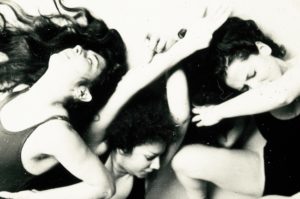
 ANDREA GIUNTA is an art historian, curator, and writer specializing in Latin American art and modern and contemporary art from the post-WWII era to the present. She received her PhD from the University of Buenos Aires, Argentina, where she is currently Professor of Latin American Art. She is Principal Researcher at the National Scientific and Technical Research Council.
ANDREA GIUNTA is an art historian, curator, and writer specializing in Latin American art and modern and contemporary art from the post-WWII era to the present. She received her PhD from the University of Buenos Aires, Argentina, where she is currently Professor of Latin American Art. She is Principal Researcher at the National Scientific and Technical Research Council.
